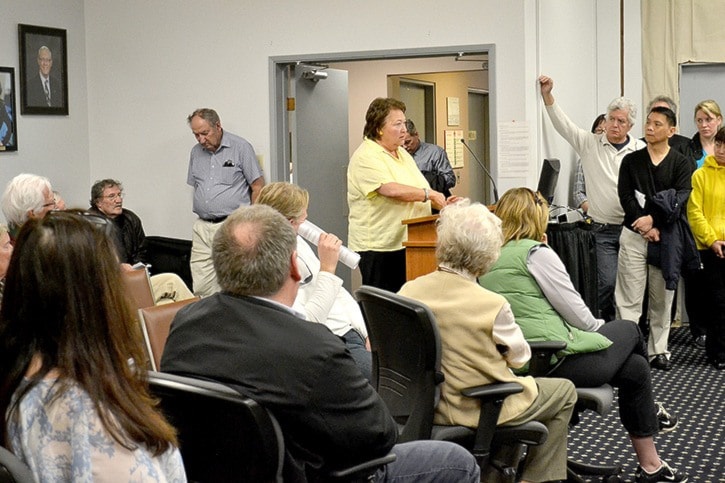A “misunderstanding” of bylaw amendments guiding development on White Rock’s West Beach led council to defer a vote on the proposed changes.
Following a public hearing last week in which six people spoke against the proposed amendments to Bylaw 2000, council voted unanimously to hold off on making a final decision until their next regular meeting, set for July 15.
“The language that was in the bylaw was somewhat complex, and it may have been difficult to understand,” Mayor Wayne Baldwin said Thursday, in explaining his suggestion to wait. “Rather than ram it through and have a bunch of unhappy people, I thought why don’t we just defer it and give (director of development services Paul Stanton) a chance to talk to them and explain the situation.
“Hopefully, that will take away the angst that was obviously there.”
Bylaw 2000 is omnibus legislation that was drafted to replace Bylaw 1591 and reflect changes to the city’s Official Community Plan. It was adopted in April, with council directing staff to return with suggestions for changes to the West Beach zoning (CR-3) and for revisions to regulations guiding the operation of vacation rentals.
The latter – which suggest imposing a limit on the number of sleeping units and the number of adult guests operators can have – were not contested at the June 24 public hearing.
For the CR-3 zoning, staff had suggested changes that limit heights for lots where another building already fronts Marine Drive to no more than 3.2 metres higher than the first or lowest building.
Residents had asked the city to base the measurement on existing grade – a move staff warned could lead developers to level their sites at a higher grade to create a higher starting point.
Those who spoke last week expressed frustration at the city’s resistance to the move.
“Why is there such a reluctance to consider this area differently?” said Simon Bergen. “Getting a curb or existing grade is not rocket science. West Vancouver does it.”
Bergen’s wife, Sonya, suggested the issue could be addressed by simply requiring development applications to include a survey that specifies the information.
“A curb is a curb is a curb,” she said.
Baldwin said residents’ concerns stem from the controversy a previous council had with a development proposed by Bob and Jacqueline Yearsley, who successfully took the city to court after they were refused a permit for a six-storey building on Victoria Avenue, even though they had followed the zoning rules. (The 23-unit building is currently under construction.)
Fears cited last week included loss of views and property values, impact to traffic and erosion of the waterfront’s overall character.
Baldwin said the concerns were exacerbated earlier this year, after a development application submitted by owners of the Ocean Beach Hotel included a request for “a substantial variation on the height.”
Noting it’s important to realize approval of height variance applications is not a given, Baldwin said it is not realistic to demand that heights be capped to no taller than what is already there.
“The zoning bylaw allows for people to build within the definition of height within the zoning bylaw, so that would be like saying if there was a…one-storey bungalow… it should never be allowed to go to 25 feet. You just can’t do that.”
